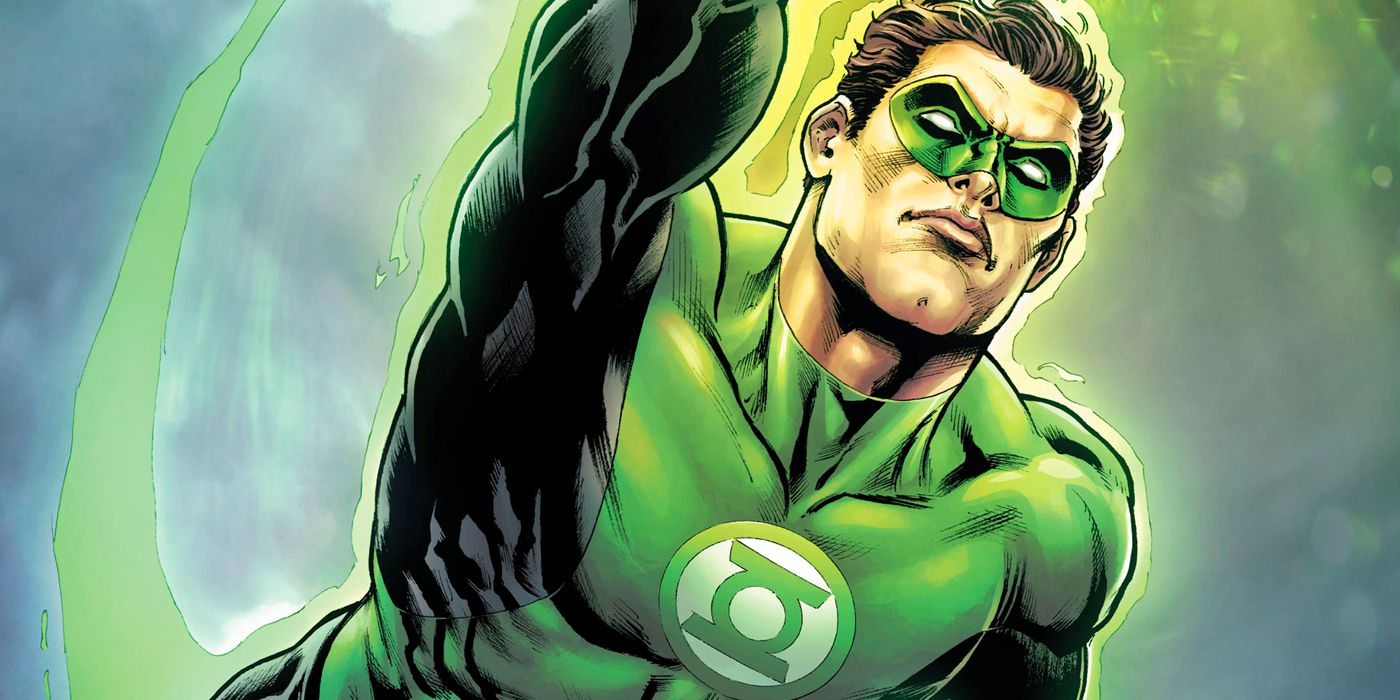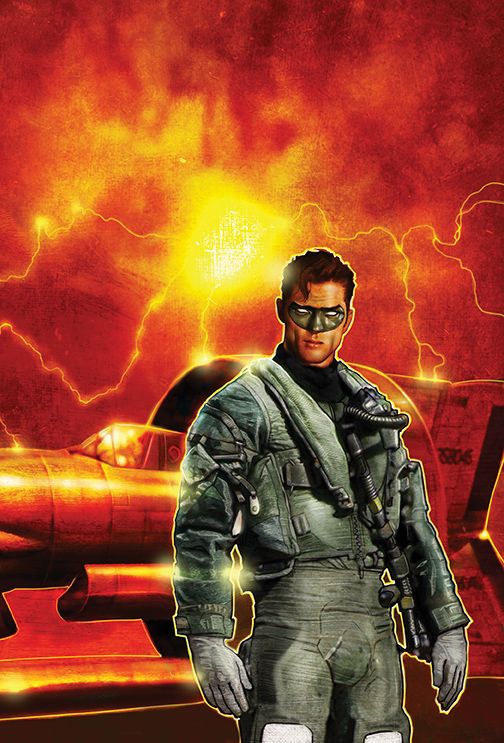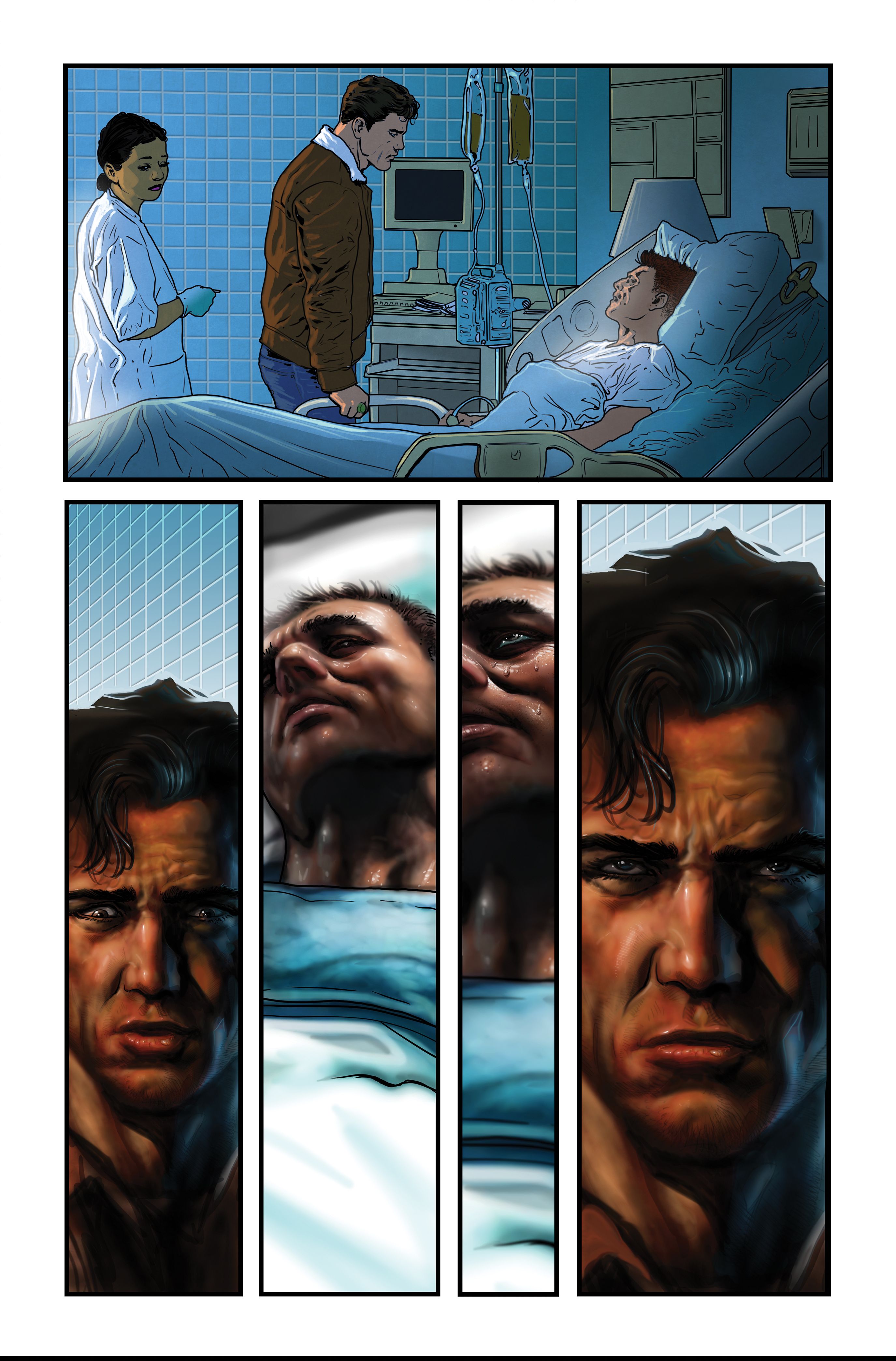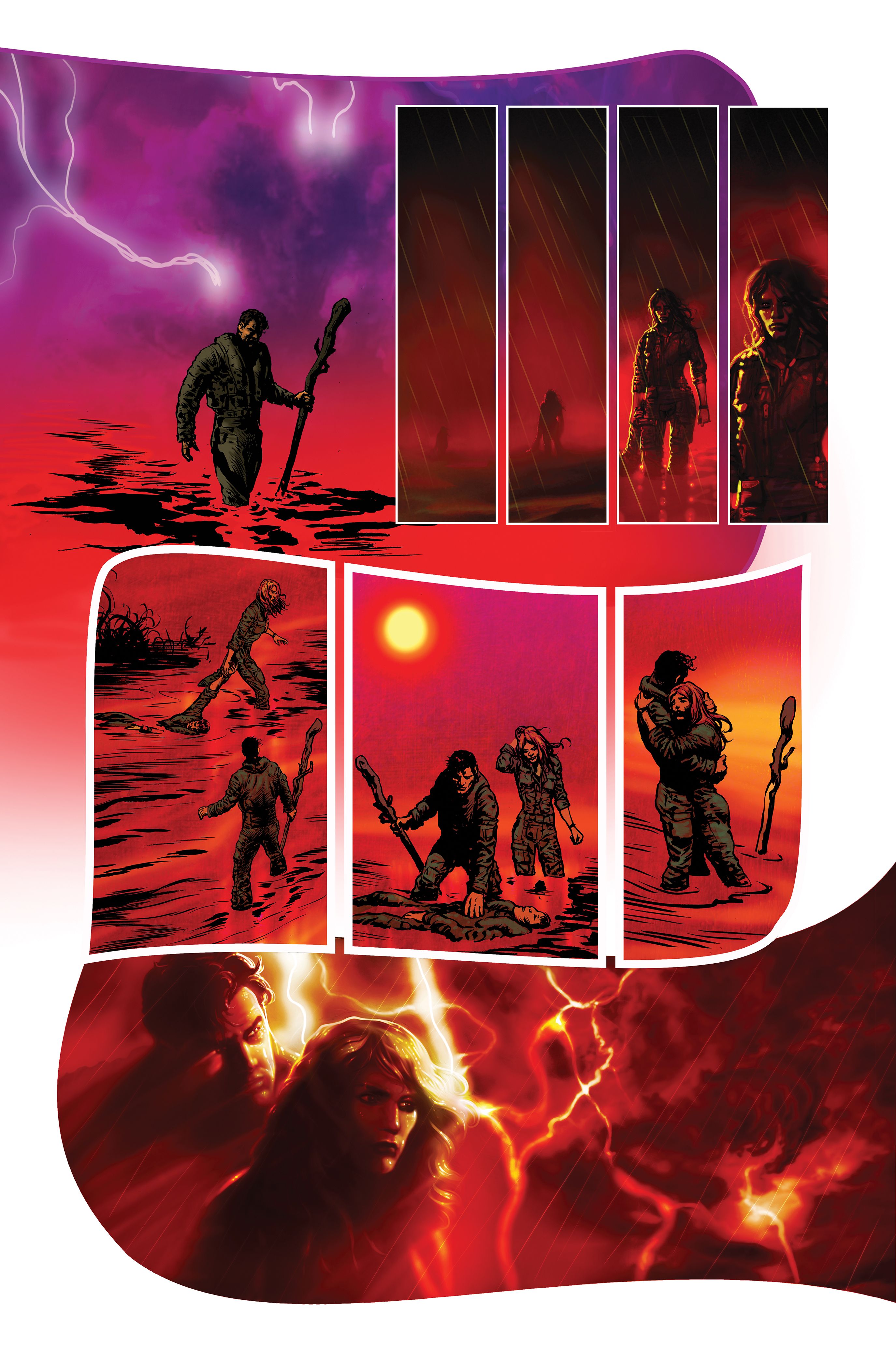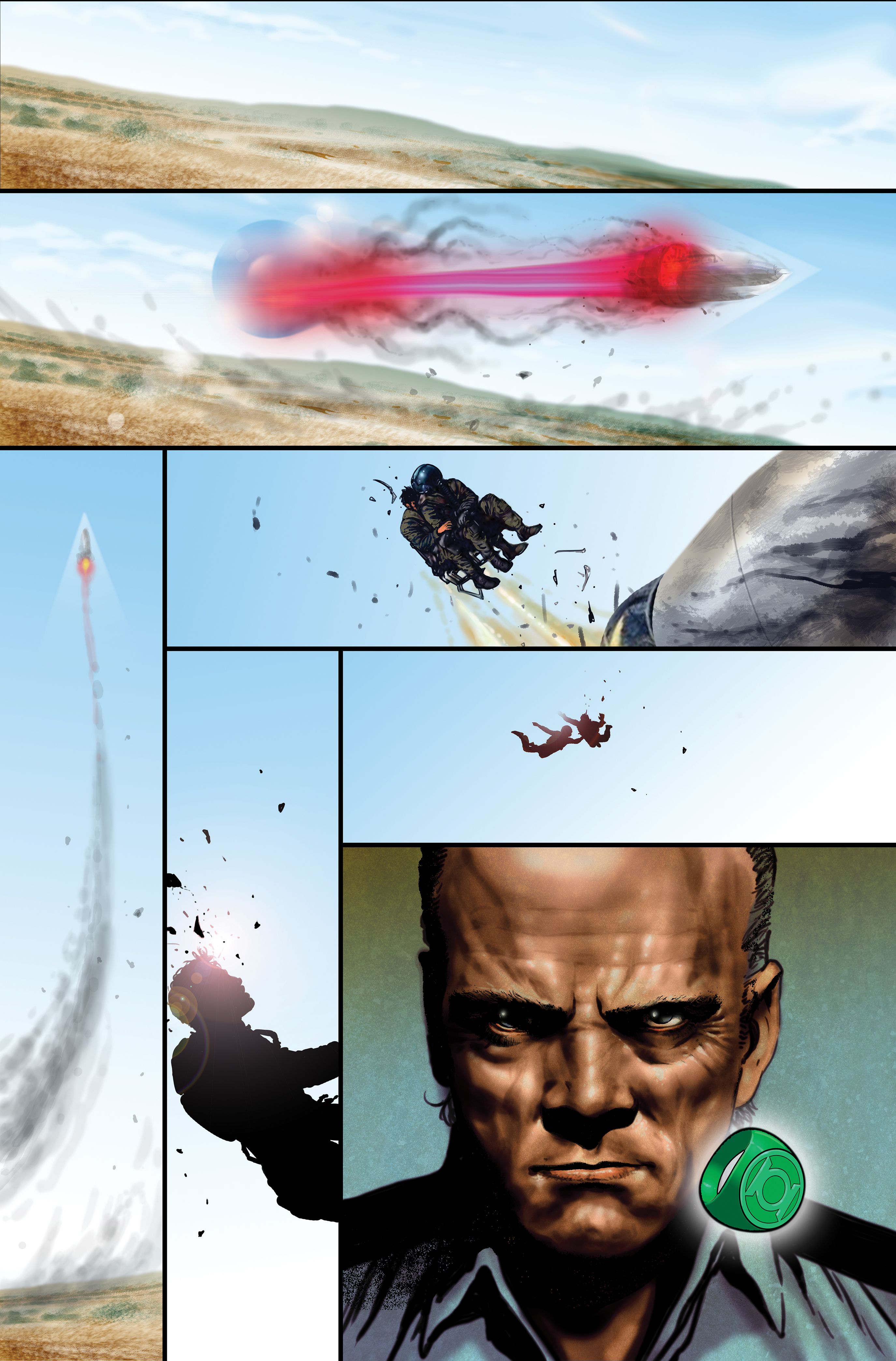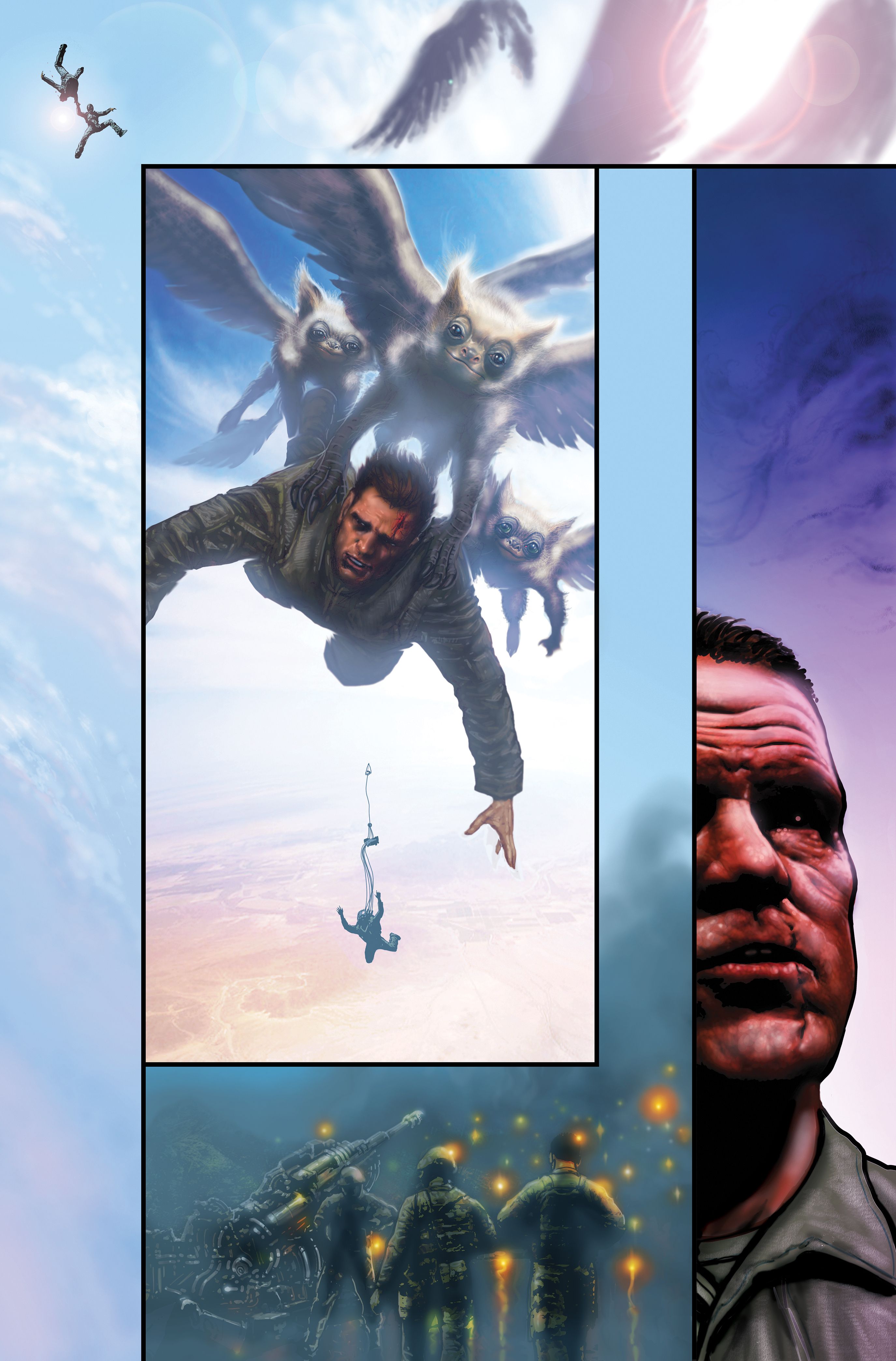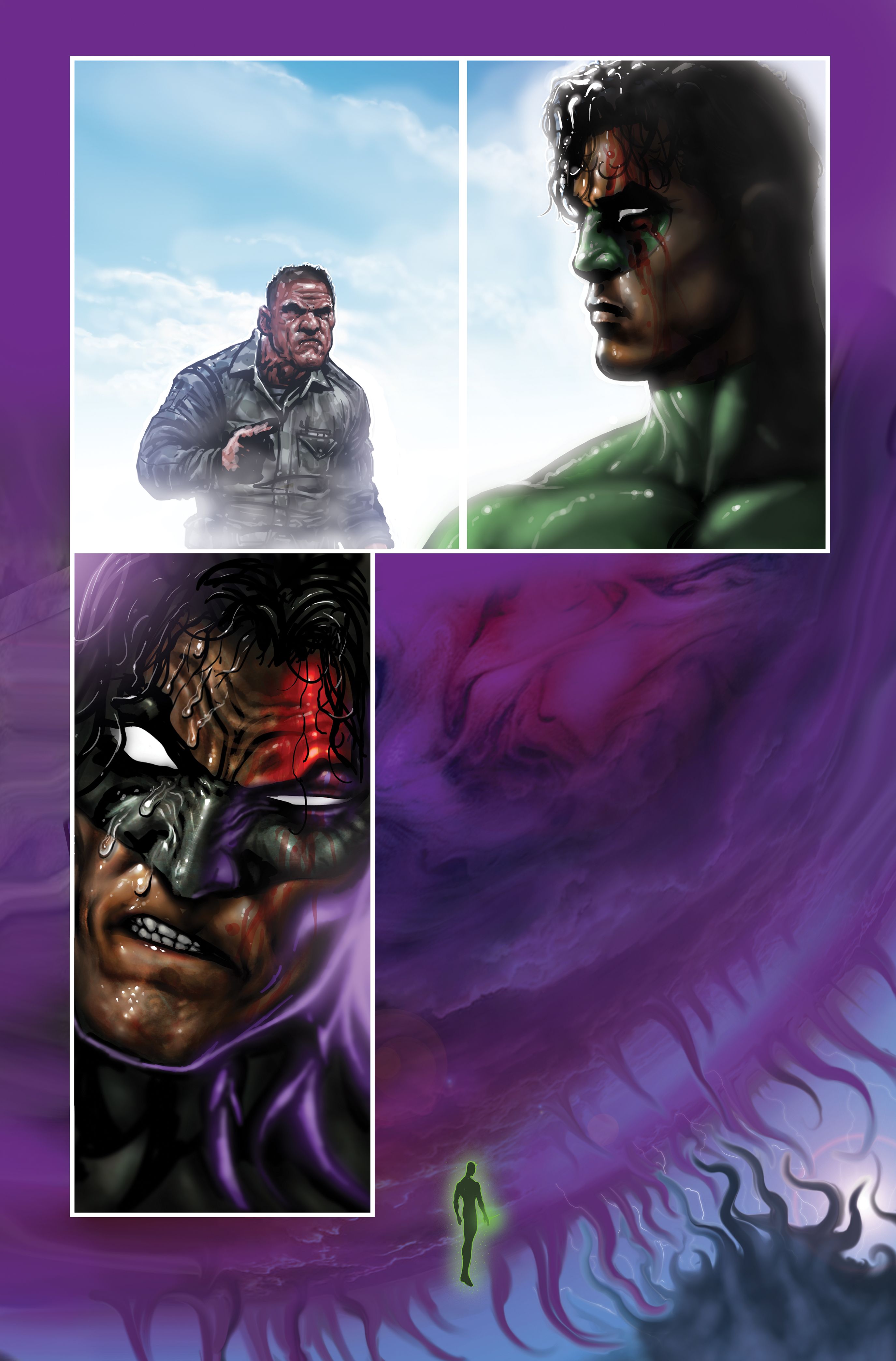After blasting off Hal Jordan into the faraway, cosmic fringes of the DC Universe, the universally acclaimed creative team of Grant Morrison and Liam Sharp are bringing Hal back down to Earth for much of the recently launched The Green Lantern: Season 2. And while this volume is slated to run for twelve issues like its predecessor, the duo are not only focused on delivering standalone adventures for Hal to face, but also push the themes and art styles in new, exciting directions as Hal is seen through different people in his life upon his return to his home planet for a thrilling set of assignments from the new, younger Guardians of the Universe.
In an exclusive interview with CBR (featuring an unlettered preview of The Green Lantern: Season 2 #3), Morrison discussed the continued joys of writing Green Lantern, why the Silver Age of Comics was such a fruitful, inspiring period for him creatively and teases what to expect next in the series.
RELATED: When Hal Jordan Was a Traveling Toy Salesman
I'm surprised by how much of Season 2 is set on Earth. You still have the big, cosmic elements but was the idea always to bring Hal back home?
Grant Morrison: Very much! There was always two strands of how Hal Jordan was played in the past: He was either on the Earth defending it from alien menaces or he was out in space and I think, with some of the earlier stories, he was mostly on the Earth. So we kind of wanted to reflect that a bit, and we spent the entire first year in space, so we thought it'd be fun to kind of exile him on Planet Earth and have him rub against some of his old friends and old enemies.
One of the more striking things about this upcoming issue is Liam is working out of his mind with this very surreal, Simon Bisley-esque art style. What made you guys want to make that visual shift for Hal's reunion with Cowgirl?
Well, I think what we probably wanted to do with these Earth-based issues -- which takes up the first half of the year -- was to do each of them in a slightly different style; so the storytelling style is different and Liam would shift his art style as well for each of them. And it just seemed, with this one, we wanted something that was kind of big and spacious. You know, there's that big sky and flying planes and little bug people in there.
And so we just wanted to do something that made it look very different and Liam went back to a style when I first saw Liam's work -- I think it was in 2000 A.D.; it's kind of like a European album or a story in Heavy Metal. So it's something I've seen before but something we certainly haven't seen in Green Lantern. I think it elevates the issue, it actually makes it a very different kind of issue and it was our intention to keep switching up the styles and trying new things.
So with that in mind, we can expect even more different styles moving forward with issues four and five?
Yeah, I mean, it's still recognizable as Liam's work but issue four is a story with the Flash, and it's a big, gonzo psychedelic, Yellow Submarine-type thing. And five is a more superhero-ish, pop art. So, again, with these earthbound issues we really thought we'd try something a bit differently.
There's something that struck me in issue two: Hal dismisses Earth as this authoritarian planet; he hates the idea of going back, and yet, he's an intergalactic space cop. Grant, if I remember correctly, you come from a bit of a punk rock background. What has been the appeal in writing space police for over a year now?
I think it's the fact that it's space police that makes interesting because Hal is super anti-authoritarian -- he's kind of not an authoritarian figure. And the way we played the Guardians and the Green Lanterns was not necessarily as an authoritarian police force in the way that we understand it but that they police disputes between planets, they try to uphold certain cosmic or eternal laws, and we'll see more of that as we explore the young Guardian stuff in Season 2.
I think it's because he's such an unusual cop, he's a beatnik cop. And I think those two elements of his personality, the duty and responsibility along with the need to be free and never tied down, make him really interesting; there's a lot of tension and push-and-pull in Hal Jordan's personality. So I think it's that and I hear people say that "Hal doesn't hate Earth, that's he has all his friends!" and I totally agree. I don't think it's so much that he hates Earth but, I think if you were Hal Jordan, and you spent time with highly advanced beings and you travel to civilizations where they really have got it all worked out, to come home to Earth -- no matter how much you love the people -- it's like coming home to a place where the environment's messed up and the DC Universe is in crisis every week [laughs].
The people [on Earth] must live in a constant state of fear and anxiety and, I think, for Hal Jordan, that's just hard to watch. As much as he loves his friends and visits them -- I've got a lot of great friends in America and maybe only see a lot of them once year -- I feel like that's what Hal is like. He's got a lot of affection but he doesn't really like seeing what's happening with this constant level of emergency existence.
I think it was the Annual that he kind of felt out of sorts when he was back with his actual, biological family.
Well, he always likes the kids, a big thing is that Hal Jordan always likes kids and has a good relationship with his nieces and nephews, in particular. But yeah, he's always had problems with his family, there's a lot of weird familial connections within the Jordans over the years.
You had mentioned the young Guardians and I remember in the first issue of Season 2, they came in and they didn't like how the Corps had been run. And there's kind of been a history of the Guardians of the Universe maybe not being the best at their jobs of protecting all sentient life. So are we going to see these old school values and new Guardians clash as Season 2 progresses?
Oh, very much so, that's a big strand with the relationship that Hal starts to develop with the young Guardians. And they're almost the opposite [of their predecessors]: They're not ancient, they're not authoritarian in that sense but they have very strict ideas of what they think is right and wrong. They have far-seeing abilities to predict what might happen and how things will work out. But, as you said, they're not always necessarily right and they're going to have to learn that.
One of the characters also introduced in issue one that our readers really responded to was the sentient salt Lantern. Liam just draws him so comedically brilliantly. Are we going to see more of him and where did the idea for him come about?
[laughs] Yeah! He's one of those ones that, as Liam started to draw him, he really came to life and we really fell in love with him. I had the basic idea of having this kind of interplanetary law enforcement symposium and I was looking at a bunch of old DC books, as I do, to find characters in the past who created to be kind of interplanetary lawmen. There was a bunch of them from old Strange Adventures and there's one panel where all these crystal guys appear and hang out with Adam Strange. And it was just a tiny little panel but I thought they looked great, they had these kind of guns that looked like vacuum cleaner attachments that they had in these battles that they wore around their necks -- and these are the dumb things that kind of fire up my imagination.
So I thought, from that one panel, let's bring these guys back from the planet Karalyx, and that was our decision to put him in there. And our character doesn't really look much like them because, as you said, Liam does a brilliant design which is a little bit different from the original. But yeah, that's where he came from [initially] as a throwaway thing but he will be seen again shortly.
I was talking to Joshua Williamson and he mentioned you had said that guys like Barry Allen were like astronauts, always with this air of friendly professionalism. In the third issue of Season 2, we see Hal get back to his day job as a test pilot. Was that something you wanted to bring back to the forefront?
Well, again, with Hal Jordan in each of these one-shot stories, you're going to see him through someone else's eyes. It does seem quite different -- even in his vocabulary -- the way he talks to other military people or pilots is different from the way he talks to the Flash or Green Arrow. So that was part of the fun as well to have many different romantic interests or friends from the past who can kind of give us a different take on Hal Jordan. So we wanted to play up that personality: He's unflappable, he's been through everything, and he kind of knows when he makes a decision it works out for him; he's got good luck in that way and there's a sense he's a man without fear.
And I figure that's why he gets on with Barry Allen. The Flash is another guy who's been through bizarre psychedelic adventures -- they've been turned into puppets and tablespoons and all kinds of things -- but they keep their cool, they're kind of like astronauts. I think that's the thing that makes their relationship different from the Green Lantern/Green Arrow relationship.
In a lot of ways, both seasons have been a love letter to the Silver Age, not just comic books of that era but also pulp science fiction by guys like Asimov. I remember quite a bit of your Batman run had drawn heavily from the Silver Age and so had All-Star Superman. What is it about the Silver Age that you find so richly inspiring as you craft these stories within the DC Universe?
I think that was a time when superhero characters were probably at their best and at their most appropriate to the culture. And I wasn't a fan of comics during the Silver Age; I became a fan when Neal Adams and Denny O'Neil were doing Green Lantern and the sort of weird stuff by Jim Starlin and Steve Englehart over at Marvel. So, for me, it was sort of going backwards and discovering that stuff and I just thought the stories were better, they were more universal and you could read them as an adult; those [Hal Jordan co-creator] John Broome stories in The Flash and Green Lantern, in particular.
They're just beautifully constructed as an adult and -- even as a kid with all that "Gee, whiz!" stuff -- they're fantastic, just great stuff happening all the time. And again, with all these one-off stories, I was really trying to do a John Broome-type story and they're harder to do than anyone might think. And it's not to copy his style or copy how he would do it but to take the kind of essence of it. And I think all these short stories are me trying to do John Broome in very different ways.
So the stories were much more universal, they were at their peak for their audiences. Superheroes were confident and represented a forward-looking kind of time when there was a lot of youthful energy. I love superheroes who get the job done so that just seemed like the time when they were at the pinnacle of their most effectiveness and I always go back to that to get the feel of that and hope that it can translate in the ways the characters can convey.
You've had Hal team up with other Green Lanterns and Batman team up with the Club of Heroes and Animal Man team up with his own set of heroes. Was it always to give different shades of what it meant to be a hero juxtaposed against the leads?
Yeah, pretty much! It was to contrast them with others and other people in the same business as them who do things differently. So it was always that and, particularly in the case of Batman and Superman and these big iconic figures, there's really a lot of knock-offs of these characters and here's why the knock-offs don't work or do work. It was just an interesting way of contrasting the main character with all these little spinoffs and versions of them that have appeared over the years to figure the appetite for characters and their derivatives.
It's something I've noticed throughout all your work, this sense of deconstructionism through comparison.
Yeah, I think it's definitely there but I think less in the way of deconstructionism -- the way I look at it is more like is I'm kind of trying to get the essence of a figure, to get the whole feeling of it. It's almost like extracting the song out of a long ballad that's been going for fifty years or more [laughs]. I always feel it's that! So part of what I'm doing tends to also, like, teach an overview of the character because I can't escape from that; I've got to talk about what they mean in the real-world, even in the context of a story.
So that stuff tends to be like "How do we view Superman? How do we view Batman?" You know, there's guys like Moon Knight and Nighthawk [laughs]. If you put characters like that against them and push-and-pull against them, you kind of get to see why Batman is still the coolest of all.
Have you kind of developed who you know Hal Jordan is or is that something you and Liam are still kind of working through?
No, I feel like I got a pretty good grasp on the character but I also see him as very complex which why you can tell stories from slightly different points of view. But yeah, I feel like I got a good handle on him but there's always more to discover and that's what the rest of Season 2 is hoping to do. What I like about Hal is that you don't get to see his thoughts in this comic, pretty much like we didn't get to see Batman's thoughts or Superman's thoughts in All-Star. And, again, I think it's good to see a superhero by what he actually does and what he achieves. We never know what Hal's thinking and Hal's thinking is probably high-level anyway, he never gives anything away and he's always pretty relaxed. We never know what he's thinking and I feel like he's a steel-trap in a way, he's working stuff out all the time.
We got to see Hal go into some pretty dark places with Blackstars, I feel like that was maybe the darkest DC story you've ever done. And it felt like more than an interlude between seasons but really the culmination of Season 1. What made you want to do it as a separate miniseries?
Darkest, yes, but there was a certain glee to it as well [laughs]. To be honest, I was pretty fond of Blackstars because I was able to cut loose in a way I don't usually do and take the side of the bad guys. [Doing it as a miniseries illustrated by Xermanico] was purely to give Liam a break to catch up with work. They wanted three months of stuff so I created this three-issue story and I was happy to do it because I thought that the villainous character and that aspect had a lot more juice in it. So that's how it happens and I wanted to make sure that everything ties together and it ties together to the end and there's kind of strands that may appear in Season 2.
What has surprised you the most about getting into Hal Jordan's headspace?
Well, it's kind of like with Superman -- he's expansive and he's a good character [laughs]. Batman is a more devious and more Machiavellian type of character who can really bring you down if he wants. But with Green Lantern and Hal Jordan, it's really fun to put yourself in that headspace, this is a guy who doesn't break. You know, so many heroes have been made fallible as an attempt to make them relatable and, I think with Jordan, the less fallible you make him, the more fun -- and honestly, the more relatable -- I think we know guys like him, guys who get their heads down and just do the job, that would get their arms blown off and just be like "It's just a scratch!" [laughs].
And to take him seriously and be in his head, he doesn't have hang-ups -- he's a cop, he's like an astronaut. And so, for me, that's a really interesting mindset and see how that guy reacts to things and sees things with that absolute lack of fear. He knows himself and he's been to Hell and back.
I feel like this is the first Green Lantern run in awhile where he isn't haunted by Parallax. I feel like every issue is a standalone adventure, just another day on the job.
And that's a big part of it and I'm glad you noticed that because he gets it done. There's not a lot of stress for Hal until maybe midway through the run. I like to see him coming in like a cop; the minute a cop comes in with the hand of authority and defends and then gets to get up and go home and I like that he has that authority to just come in and sort things out.
Again, Liam has really been pulling out all the stops. How has it been working with him and will it be 24 issues together by the time Season 2 is done?
Yeah, man, it will be. It's just been a great collaboration. Most of the time, when I'm working with an artist, I'll just send them a script and the artist draws it and we meet at conventions [laughs]. But, with Liam, we actually get on the phone and talk about stuff. So it's been fun and kind of like I said before, I'm doing it just to see him draw mad stuff. So, for me, it's great just to take the backseat and just be the drummer while he's lead guitarist and just to form all these images and insane stuff Liam's been doing has been great.
So you can see that in these issues, we're kind of pushing each other to new places and to stretch and to try things that are a bit different and experiment a little bit because I think we both know that we can do it and we get along with each other and we've worked together enough that we know we can stretch a little bit and try new things.
Just this wrap this one up, Grant, what are you looking forward to the most in these next couple issues and hope readers walk away with?
What we really hope is that we love you can just pick up this comic and get a whole story with characters and locations and, at the end, it's kind of over with a little cliffhanger to leak into the next one. But we like that, you can pick up one book and read it and you're done; you don't have to buy a thousand others. And it's harder for me to write those kind of books, it's been much more fun for me to try and do something that's done in one. So I hope people enjoy that and I hope they enjoy where we're taking Hal and the Guardians which is the longer season's arc and let it play out and we'll be bringing back Cowgirl not just once but twice.
Written by Grant Morrison and illustrated by Liam Sharp, The Green Lantern: Season 2 #3 goes on sale April 8 from DC Comics.

